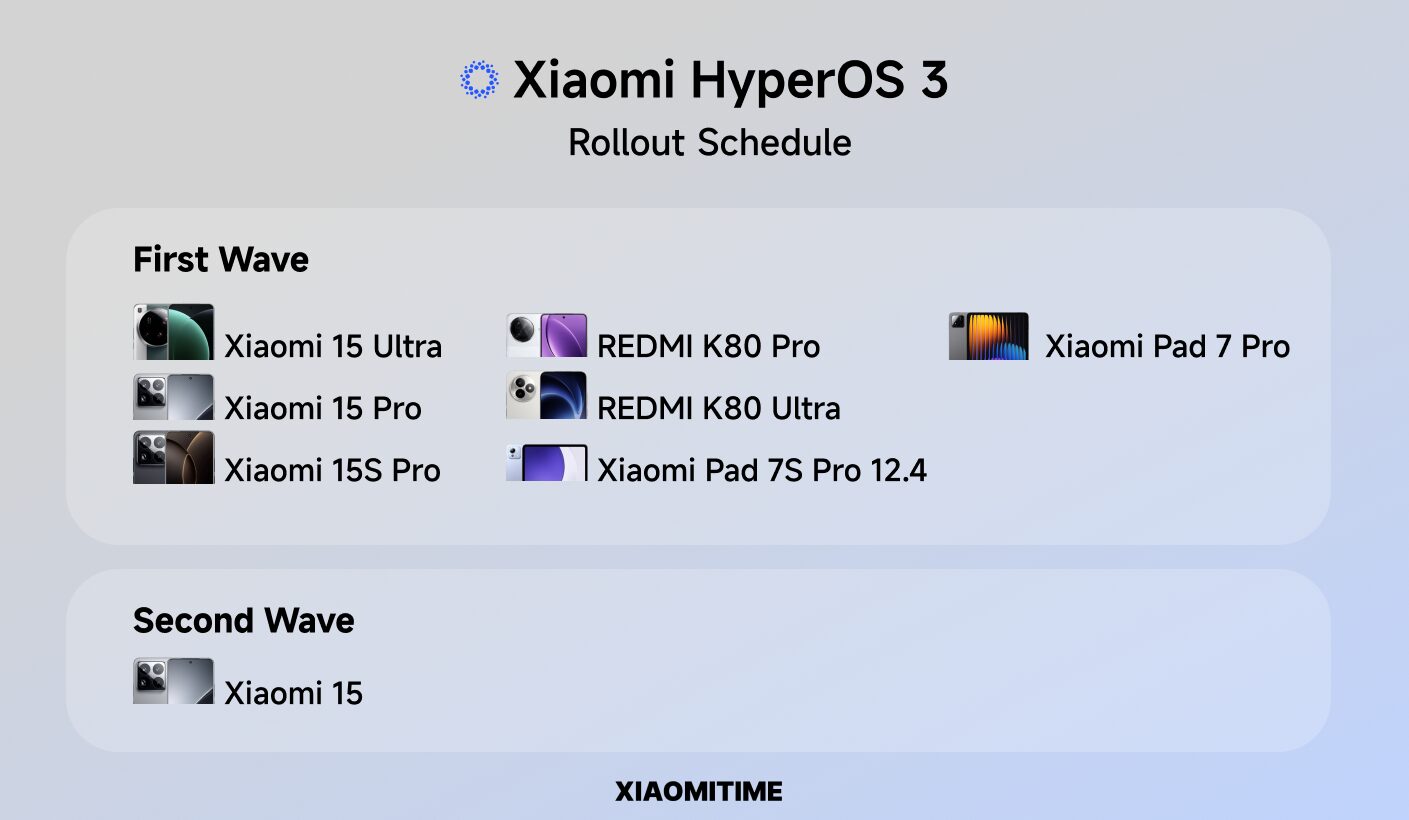Xiaomi HyperOS 3 Rollout confirmed: Two-Wave Deployment Plan Explained

Xiaomi HyperOS 3 Rollout schedule has just been confirmed, outlining a two-wave deployment strategy that gives priority to flagship smartphones and premium tablets. The software, which will be unveiled tomorrow, is said to deliver 30% better optimization than its predecessor, promising faster performance, improved battery efficiency, and smoother overall user experience across Xiaomi’s ecosystem.
The company’s carefully staged release highlights its focus on stability and reliability. By starting with top-tier devices, Xiaomi can collect feedback and resolve potential issues before expanding the update to the broader user base.
Xiaomi HyperOS 3 Rollout First Wave Devices
The initial rollout of HyperOS 3 will cover Xiaomi’s most advanced devices, including:
-
Xiaomi Pad 7S Pro 12.5
-
Xiaomi Pad 7 Pro
-
Xiaomi 15 Ultra
-
Xiaomi 15 Pro
-
Xiaomi 15S Pro
-
Redmi K80 Pro
-
Redmi K80 Ultra
Second Wave Devices
Once the deployment proves successful on flagship hardware, the Xiaomi HyperOS 3 Rollout will extend to additional models, starting with the standard Xiaomi 15 and other high-volume devices.
Performance and Features
The 30% optimization boost covers system responsiveness, multitasking efficiency, and UI fluidity, building on Xiaomi’s ongoing software development efforts. These improvements are expected to make a visible difference in everyday use, particularly for heavy users who rely on Xiaomi phones and tablets for work, gaming, and media consumption.
Xiaomi will showcase HyperOS 3’s new features and improvements in detail during tomorrow’s presentation, offering insights into its technical advancements and future rollout roadmap.
For users eager to get started, Xiaomi has pointed to tools like HyperOSUpdates.com and the MemeOS Enhancer app on the Google Play Store, which provide access to hidden features, system updates, and advanced device management options.
With this structured approach, Xiaomi is signaling a stronger long-term commitment to software quality, aiming to position HyperOS 3 as a benchmark in the Android ecosystem.




